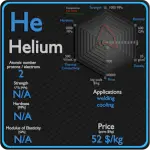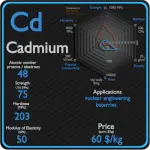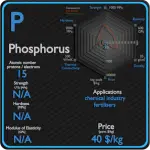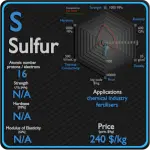This article contains comparison of key thermal and atomic properties of hydrogen and lithium, two comparable chemical elements from the periodic table. It also contains basic descriptions and applications of both elements. Hydrogen vs Lithium.

Hydrogen and Lithium – About Elements


Source: www.luciteria.com
Hydrogen and Lithium – Applications
Hydrogen
Hydrogen is versatile and can be utilized in various ways. These multiple uses can be grouped into two large categories. Hydrogen as a feedstock. A role whose importance is being recognized for decades and will continue to grow and evolve. The largest single use of hydrogen in the world is in ammonia manufacture, which consumes about two-thirds of the world’s hydrogen production. Hydrogen is versatile and can be utilized in various ways. These multiple uses can be grouped into two large categories. Hydrogen as a feedstock for further chemical processes. A role whose importance is being recognized for decades and will continue to grow and evolve. And hydrogen as an energy carrier. Hydrogen is also commonly used in power stations as a coolant in generators due to a number of favorable properties that are a direct result of its light diatomic molecules.
Lithium
Lithium has many applications, from lubricating grease, alloying additions in particular for aluminium and magnesium alloys, to glazes for ceramics, and finally, lithium batteries. In particular, lithium is and will continue to play an increasingly important role in the battery-powered clean air future. Lithium batteries are widely used in portable consumer electronic devices, and in electric vehicles ranging from full sized vehicles to radio controlled toys. The term “lithium battery” refers to a family of different lithium-metal chemistries, comprising many types of cathodes and electrolytes but all with metallic lithium as the anode.
Hydrogen and Lithium – Comparison in Table
| Element | Hydrogen | Lithium |
| Density | 0.00009 g/cm3 | 0.535 g/cm3 |
| Ultimate Tensile Strength | N/A | 1.5 MPa |
| Yield Strength | N/A | N/A |
| Young’s Modulus of Elasticity | N/A | 4.9 GPa |
| Mohs Scale | N/A | 0.6 |
| Brinell Hardness | N/A | N/A |
| Vickers Hardness | N/A | 167 MPa |
| Melting Point | -259.1 °C | 180.5 °C |
| Boiling Point | -252.9 °C | 1342 °C |
| Thermal Conductivity | 0.1805 W/mK | 85 W/mK |
| Thermal Expansion Coefficient | — µm/mK | 46 µm/mK |
| Specific Heat | 14.304 J/g K | 3.6 J/g K |
| Heat of Fusion | 0.05868 kJ/mol | 3 kJ/mol |
| Heat of Vaporization | 0.44936 kJ/mol | 145.92 kJ/mol |















